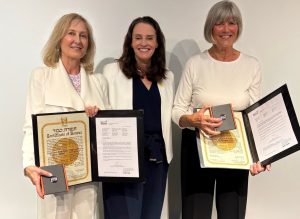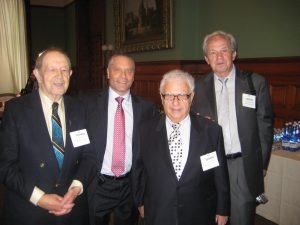This year on the evening of April 23, people will pause to remember the heroism of the millions of Jews who perished in the Holocaust. They will also remember the Jews who marshalled what resources they had in order to fight back against Nazi oppression. As Yom Hashoah approaches, here’s a look at Jewish resistance during the Second World War.
The late renowned historian Sir Martin Gilbert described resistance in his book, The Holocaust: The Jewish Tragedy: “In every ghetto, in every deportation train, in every labor camp, even in the death camps, the will to resist was strong, and took many forms. Fighting with the few weapons that would be found, individual acts of defiance and protest, the courage of obtaining food and water under the threat of death, the superiority of refusing to allow the Germans their final wish to gloat over panic and despair.”
Gilbert takes a broad definition of resistance. “Even passivity was a form of resistance. To die with dignity was a form of resistance. To resist the demoralizing, brutalizing force of evil, to refuse to be reduced to the level of animals, to live through the torment, to outlive the tormentors, these too were acts of resistance. Merely to give a witness of these events in testimony was, in the end, a contribution to victory. Simply to survive was a victory of the human spirit.”
There are many sites which do an excellent job documenting the events leading up to the Warsaw Ghetto Uprising in 1943. These include the Jewish Virtual Library and at Yad Vashem.
But to get a feel for what it was like to be there, I recommend reading the lengthy memoir written by Marek Edelman, the only surviving leader of the Warsaw ghetto uprising. He writes: “The partisans were on the alert everywhere… From balconies, windows, and rooftops they showered the moving truckloads of SS-men with hand grenades and with rifle and pistol fire. Once even a truck speeding on the ‘Aryan side’ was blown up. On one occasion Rozowski and Sziomo, during the course of an area inspection, noticed an approaching German truck. They thought for an instant and then swiftly climbed to a balcony. From here they threw a four-pound powder charge straight down into the truck killing all but five of the sixty SS-men in it.”
Although it was the most famous act of defiance, the Warsaw Ghetto Uprising was far from being the only Jewish rebellion during the war. As the United States Holocaust Memorial Museum points out, “between 1941 and 1943, underground resistance movements developed in approximately 100 ghettos in Nazi-occupied eastern Europe (about one-fourth of all ghettos), especially in Poland, Lithuania, Belorussia, and the Ukraine.”
You can learn more about those other movements at The Miles Lerman Center for the study of Jewish Resistance and at the Resistance Timeline, part of the Teacher’s Guide to the Holocaust, created by the University of South Florida.
◊
When you arrive at the Jewish Partisan Educational Foundation website, you are confronted with some difficult questions: Would you leave your family? What would you risk? Would you fight back? How far would you go? Then you are invited to “Learn about the tens of thousands of young people who stood up to Nazi tyranny and oppression and saved the lives of thousands of Jews.” This excellent site is geared toward young people and is relatively light on text, but it gets the message across through dozens of gripping video interviews with partisans.
As well, visitors are encouraged to email questions to a panel of six partisans who post their responses on the site. One sample question was, “How did you survive the winter’s cold?” Frank Blaichman responsed: “Outside like an animal. Sleeping on the freezing ground. Went through hail, snow storms, rain storms. When you woke up in the morning I was covered with a blanket of snow many times. Snow was like insulation. It was not cold. Kept you warm a little bit. That is how we survived the first winter 1942-1943. We had no bunkers, they were destroyed in November, and we could not build any more bunkers. The spirit was high. We know we were going to live.”
The end of the war did not mean the end of resistance. In a fascinating article in The Guardian, Jonathan Freedland tells the story of bands of Jewish avengers known as the “Nokmim.” Freedland starts by looking at how very few Nazis and collaborators were brought to trial after the war. That led Jewish survivors of the Holocaust and former Jewish partisans to take justice into their own hands. In most cases, the victims were targeted in their new homelands – Spain, Latin America, Canada. At other times, mass revenge was plotted – but not carried out – by poisoning the water supply of five German cities. A gripping read.
◊
Finally, a note about the date to mark Yom Hashoah. The decision to commemorate Yom Hashoah on the 27th day of Nisan was the result of a great deal of negotiation soon after the State of Israel was established. According to this article, this time of year was selected in order to coincide with the Warsaw Ghetto Uprising. But, since the Uprising began on the first night of Passover in 1943, it was decided that Yom Hashoah be observed in late Nisan, after Passover but within the time span of the Warsaw Ghetto Uprising.
The piece reads: “On April 12, 1951, the Knesset (Israel’s parliament) proclaimed Yom Hashoah U’Mered HaGetaot (Holocaust and Ghetto Revolt Remembrance Day) to be the 27th of Nisan. The name later became known as Yom Hashoah VeHagevurah (Devastation and Heroism Day) and even later simplified to Yom Hashoah.”







